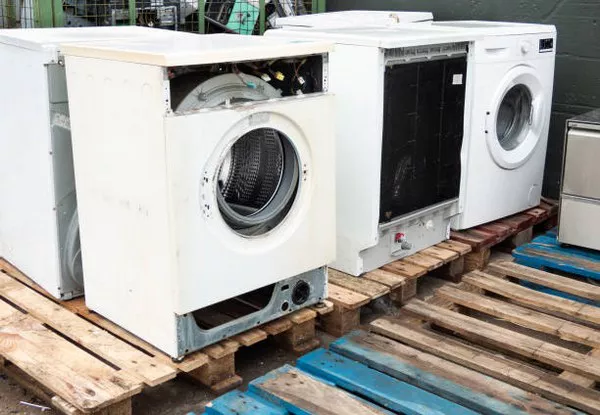In the realm of backup power systems, generator transfer switches play a pivotal role in ensuring uninterrupted electricity supply during outages. These devices serve as a crucial link between the utility power grid and a standby generator, seamlessly transferring the load from one source to another. This article delves into the workings of generator transfer switches, shedding light on their importance, types, and the intricate mechanisms that enable a smooth transition of power.
Importance of Generator Transfer Switches:
Generator transfer switches are fundamental components of standby power systems. Their primary function is to automatically connect the load to the generator when the utility power fails and revert back to the grid once power is restored. This automatic transfer is essential for critical applications such as hospitals, data centers, and emergency services, where any interruption in power supply could have severe consequences.
Types of Generator Transfer Switches:
There are two main types of generator transfer switches: manual transfer switches (MTS) and automatic transfer switches (ATS).
Manual Transfer Switches (MTS):
Manual transfer switches require human intervention to initiate the transfer of power from the utility grid to the generator. Although they are more cost-effective, they may not be suitable for applications where a seamless and immediate power transition is crucial. In scenarios where rapid response is necessary, such as in healthcare facilities or mission-critical operations, automatic transfer switches are the preferred choice.
Automatic Transfer Switches (ATS):
Automatic transfer switches are designed to detect power outages and switch to the backup generator without any human intervention. ATS units monitor the voltage and frequency of the utility power. If abnormalities are detected, indicating a power outage, the transfer switch activates the generator and shifts the load seamlessly. When the utility power is restored, the ATS switches back to the grid and shuts down the generator. This automation ensures a swift response to power disruptions, reducing downtime and minimizing the impact on critical operations.
Key Components and Working Mechanism:
Generator transfer switches consist of several key components that work in tandem to facilitate a smooth transition of power.
Transfer Switch Controller: The controller is the brain of the transfer switch. It continuously monitors the utility power and signals the switch to transfer the load to the generator when an outage is detected. The controller also oversees the synchronization of the generator with the grid during the retransfer process.
Contacts and Solenoids: Transfer switches contain electrical contacts that connect the load to either the utility power or the generator. Solenoids are electromechanical devices that control the movement of these contacts. When the controller signals a transfer, the solenoids actuate, opening or closing the contacts to redirect the power source.
Utility Sensing: To determine the status of the utility power, transfer switches employ sensors that monitor voltage and frequency. If abnormalities are detected, such as a voltage drop or a complete outage, the transfer switch initiates the switching process.
Generator Starting Mechanism: In automatic transfer switches, the starting mechanism of the generator is integrated into the system. The controller activates the generator, and once it reaches the required voltage and frequency, the load is transferred to the generator.
Seamless Power Transfer Process:
The process of transferring power seamlessly from the utility grid to a standby generator involves precise coordination of various components within the transfer switch. The following steps outline the typical sequence of events:
Monitoring Utility Power: The transfer switch continuously monitors the voltage and frequency of the utility power. As long as the utility power remains within acceptable parameters, the load is supplied directly from the grid.
Power Outage Detection: When the transfer switch detects an abnormality in the utility power, such as a complete outage or a significant drop in voltage or frequency, it triggers the transfer process.
Activating the Generator: Upon detecting a power outage, the controller signals the starting mechanism of the generator. The generator begins to generate electricity and synchronize its output with the grid.
Transfer of Load: Once the generator is synchronized and reaches the required voltage and frequency, the transfer switch opens the contacts connected to the utility power and closes the contacts connected to the generator. The load is now seamlessly transferred to the generator.
Monitoring Generator Power: During the period when the generator is supplying power, the transfer switch continually monitors the generator’s voltage and frequency to ensure stability and compatibility with the connected load.
Restoring Utility Power: When the utility power is restored and stabilized, the transfer switch initiates the retransfer process. It opens the contacts connected to the generator and closes the contacts connected to the utility power.
Generator Shutdown: After successfully transferring the load back to the utility power, the generator is shut down, and the transfer switch returns to monitoring the utility power for any future outages.
See Also How Does An RV Generator Work? A Comprehensive Guide
Conclusion:
Generator transfer switches are unsung heroes in the realm of backup power systems, ensuring the uninterrupted supply of electricity during outages. Their ability to seamlessly transfer the load between the utility grid and standby generators is essential for critical applications where downtime is not an option. Understanding the intricate mechanisms and components involved in the operation of generator transfer switches provides valuable insights into the reliability and efficiency of these systems, ultimately contributing to the resilience of power infrastructure in various sectors.

